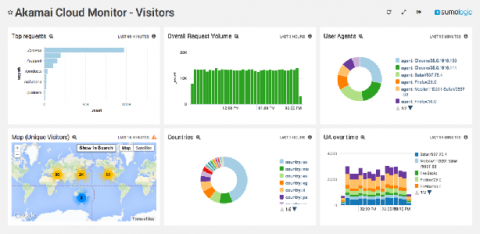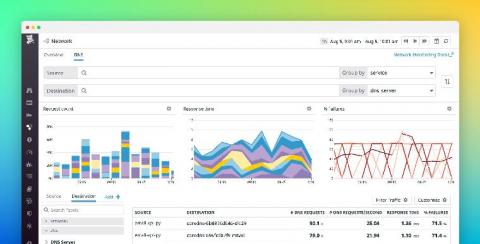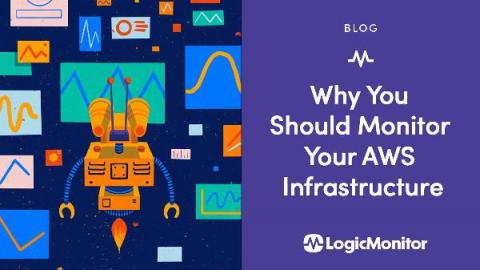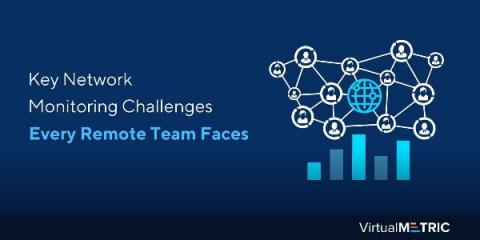Operations | Monitoring | ITSM | DevOps | Cloud
Monitoring
The latest News and Information on Monitoring for Websites, Applications, APIs, Infrastructure, and other technologies.
Monitoring Serverless Applications
Serverless. It’s likely you’ve already come across this term somewhere, but what exactly does it mean? Well, to start, serverless, or serverless computing, doesn’t really mean there aren’t servers involved, because there are, rather it refers to the fact that the responsibility of having to manage, scale, provision, maintain, etc., those resources now belong to cloud providers, such as AWS Lambda, Google Cloud Platform, Microsoft Azure, and others.
Monitor DNS with Datadog
DNS is a critical component of your infrastructure, enabling your services to reach the endpoints they rely on and connecting your users to your web applications from anywhere in the world. In order to keep your DNS healthy and performant, you need complete visibility into both internal and external DNS resolution. Datadog is excited to announce new DNS monitoring features that help you troubleshoot DNS end-to-end, so you can ensure your applications’ performance and availability.
October Launch Notes: Tech Leaders' Panel, spike protection, and more
Why You Should Monitor Your AWS Infrastructure
share post Amazon Web Services (AWS) is almost ubiquitous with the terms “cloud computing” to many. With over 175 services, it is easy to understand why the growth and branding are strong. Here’s a fun game: Which of these is NOT the name of an AWS Service offering: They all are. It is likely you may have heard of many of these, but not all. It is less likely you can give a two-sentence brief on each of them or know what they do. Cloud computing often runs into a problem of scale.
Investigating Performance Regressions with Trends
To us, dogfooding means using Sentry to improve Sentry. Here in this article, you’ll see how we used Performance to improve our search infrastructure. Recently, we extended our performance monitoring solution support to PHP and Serverless. We’re bringing it to Ruby and Java + Springboot soon too. But as some of you may have noticed, there’s also a new view in Performance, Trends. Trends shows you the most improved and regressed transactions in relation to releases.
Getting Started with Web Vitals
To improve front-end performance in your application, it’s important to understand what kind of problems users are experiencing. They may be encountering slow load times, seeing unexpected shifts, or having trouble interacting with UI components. The question is, how bad is it? Is it perpetual-rage-click bad? Is it ditch-your-app bad? Is it rant-on-Twitter bad?
Key Network Monitoring Challenges Every Remote Team Faces
Remote teams are not a new concept. Several organizations have been outsourcing development and support tasks to nearshore and offshore bases for more than a decade. And remote working is gradually increasing given the benefits it gives, like high productivity levels, lower costs, and access to a global talent pool. With the recent COVID-19 outbreak, virtual teams and remote working have truly become mainstream and are being embraced by both employers and employees alike.
Maximize Monitoring in Rancher 2.5 with Prometheus
We dedicate a lot of space in our blog to the topic of monitoring. That’s because when you’re managing Kubernetes clusters, things can change quickly. It’s important that you have tools to monitor the health and resource metrics of your clusters. In Rancher 2.5, we introduced a new version of our monitoring based on the Prometheus Operator, which provides Kubernetes-native deployment and management of Prometheus and related monitoring components.
ScaleUP 2020 Recap: Introducing Distributed Tracing & More
Today was a monumental day for Logz.io and our entire community. There is nothing more inspiring than seeing how people use the technology we’ve built to enhance their businesses. At ScaleUP 2020, our first ever global user conference, we hosted an exciting day of technical, customer-led sessions with our community. We also had the privilege of unveiling some ground-breaking new solutions and enhancements to our end-to-end cloud-native observability platform.











